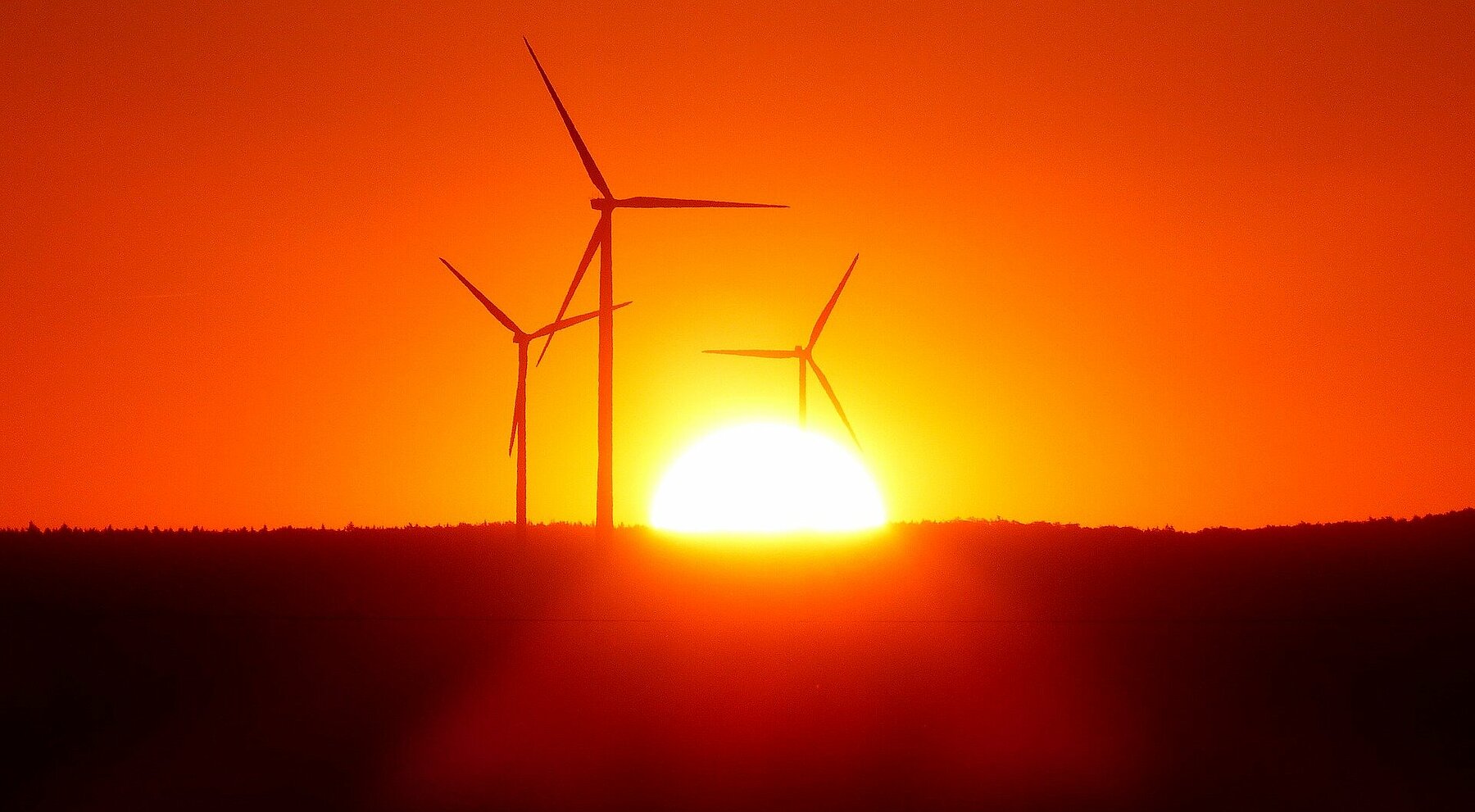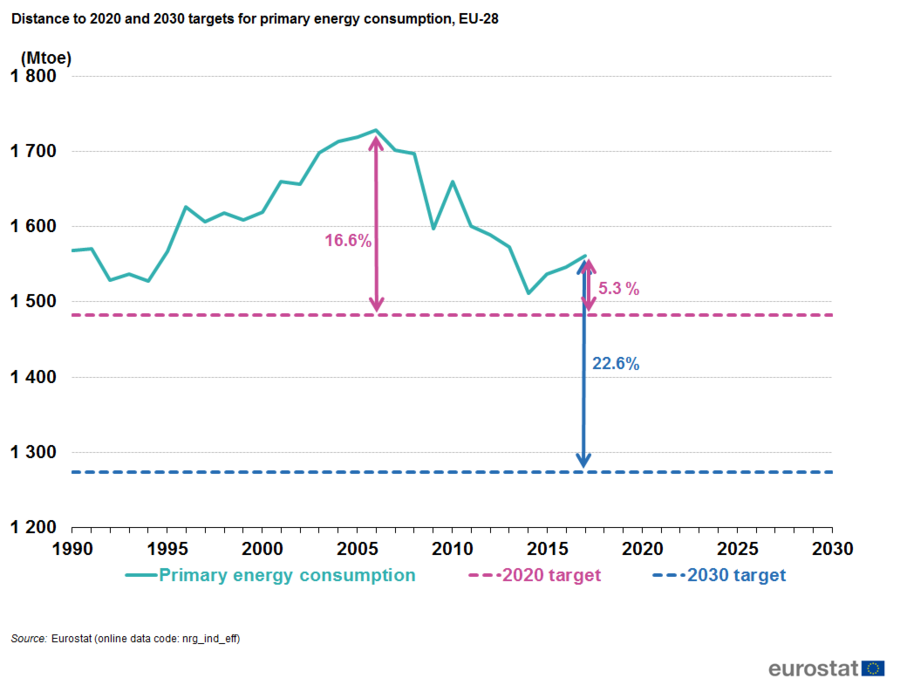

Through the 2012 Energy Efficiency Directive, the EU committed itself to reducing its energy consumption by 20% by 2020 compared to a projected baseline scenario. In concrete terms, this restricted the primary energy consumption to 1483 Mtoe. The primary energy consumption is a measure for the total energy demand of a country, including consumption by the energy sector itself, transformation and transport losses and consumption by end users. In 2018, it introduced an additional binding target for a 32,5% reduction by 2030 with a potential upward revision in 2023. This means that in 2030 primary energy consumption should not exceed 1273Mtoe.
In 2017, the EU-28 energy consumption was 5,3% higher than the target level for 2020 and 22,6% higher than the target level for 2030. Moreover, EU energy consumption constantly increased from 2014 to 2017, putting goal achievement at risk.
The buildings sector is particularly relevant as it holds large improvement potential. About 40% of energy consumption and 36% of CO2 emissions in the EU can be traced back to buildings. Currently, approximately 75% of the building stock in the EU is energy inefficient. Renovating existing buildings can reduce energy consumption and CO2 emissions by around 5%.
Sources:
https://ec.europa.eu/eurostat/statistics-explained/index.php/Energy_saving_statistics#cite_note-1
https://ec.europa.eu/energy/en/topics/energy-efficiency/energy-performance-of-buildings/overview
